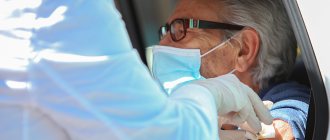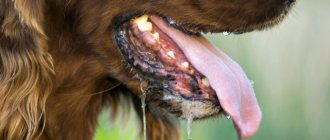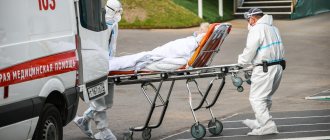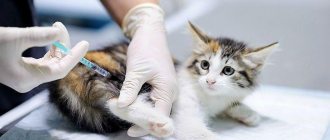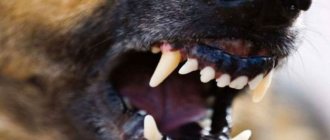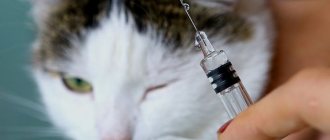Scientific goals Finding a vaccine against rabies, a disease with almost one hundred percent mortality rate.
Who is LOUIS PASTER and his assistant Emile Roux
Where is Paris, France
When from 1882 to 1885
How Pasteur spent years of painstaking research and was able to isolate the microorganisms that cause disease. To obtain a sample of the infection, he conducted experiments on animals.
Results In the 19th century, rabies was not uncommon - people became infected from sick dogs and wild animals. Louis Pasteur found an effective method of treatment.
How was the medicine created?
On July 6, 1885, Louis Pasteur found himself embroiled in a life-or-death battle. Nine-year-old Joseph Meister was brought to his laboratory from Alsace, 400 km from Paris. Two days earlier, Josef was severely bitten by a rabid dog - as many as 14 bites. Pasteur asked two doctors, Alfred Vulpin and Jacques Joseph Tranchet, to examine the boy. The doctors agreed that without treatment the patient was at risk of death.
Photo of the microscopic but deadly rabies virus under an electron microscope. The rabies virus infects a nerve cell and multiplies, infecting more and more cells. Without treatment, the infection reaches the brain and the patient dies.
Since childhood, Pasteur remembered the torment that people with rabies experienced. The virus, which is found in animal saliva, attacks the nervous system, spinal cord and brain over several weeks. His victims writhe in spasms and convulsions, they are thrown into a fever. They experience hallucinations - they see things that are not really there. They are unable to drink or eat and eventually fall into a coma. Death is coming soon.
For three years, Pasteur and his assistant, Emile Roux, had been trying to find a cure for rabies, but Pasteur believed that the work was far from complete. He tested the vaccine on several dogs, but has not yet conducted experiments on humans. Pasteur and Roux risked their lives working with rabid dogs and collecting their infected saliva.
Louis Pasteur in his laboratory. Pasteur understood that dirt, that is, microbes, could ruin all his experiments, so he insisted on impeccable cleanliness.
Over the course of ten intense days, Pasteur gave Joseph Meister 13 injections of rabies vaccine, gradually increasing the concentration. He waited and hoped that the vaccine would work. Joseph's body's reaction to the drug was decisive for Pasteur's career. The scientist understood that scientific evidence was on his side: rabies was not the first fatal disease he studied. In 1877, anthrax, a devastating plague, killed thousands of sheep across Europe.
Anthrax is dangerous to both livestock and people. During his experiments, Pasteur discovered that he could create weakened forms (strains) of viruses. If such a strain is introduced to a sheep, then its body is able to fight the disease. In 1881, Pasteur inoculated an entire flock of sheep with his new anthrax vaccine.
A doctor injects a young Frenchman with a fresh rabies vaccine. Pasteur watches the procedure, wondering if the medicine will help or if the patient will only get worse.
Pasteur's assistants are preparing vaccines. Once a successful vaccine was created, large quantities of it were needed to treat people and animals that might be infected.
Twenty days later he infected these sheep and another unvaccinated flock with anthrax virus. All unvaccinated sheep died. All vaccinated people survived. Pasteur used this experience to develop a vaccine against rabies. It turned out that the dried spinal cord of infected rabbits contained a weakened form of the virus.
Once in the animal's body, the weakened virus did not cause symptoms of rabies. On the contrary, the body began to produce special cells - antibodies that fought the disease!
Pasteur's powerful microscope allowed him to study bacteria, organisms that can cause disease. He divided them into different types and looked for ways to cope with those harmful to the body.
The glass flask on the left contains the spinal cord of a rabbit infected with rabies. Pasteur weakened the virus by exposing it to air and then injecting it into patients.
It was thanks to this that the treatment of young Joseph Meister was successful. He recovered and returned home. Pasteur became famous, and crowds of sick people flocked to Paris. From October 1885 to December 1886, Pasteur and his colleagues vaccinated 2,682 people suspected of having rabies. 98% of them survived. Josef has grown up. During World War I, he served in the army and then worked as a gatekeeper at the Pasteur Institute, the main research center for microbiology and infectious diseases of the day.
Louis Pasteur and the rabies vaccine
Louis Pasteur was a French chemist and microbiologist who first tested the rabies vaccine on humans. Pasteur's first patient, Joseph Meister, was grateful to the scientist all his life. Photo - listennotes.com
According to the World Health Organization (WHO), rabies is the tenth leading cause of death among infectious diseases and is reported in more than 150 countries. The virus quickly attacks the central nervous system, after which the person immediately dies due to paralysis of the respiratory tract.
Every year more than 55 thousand people die from this disease around the world. Until the 19th century, rabies was considered a terrible and incurable disease. The situation changed dramatically when the famous microbiologist and chemist Louis Pasteur, in the summer of 1885, first tested the rabies vaccine on humans.
The French scientist's first patient was 9-year-old Joseph Meister, who was bitten by a rabid dog. Rural doctors could not treat such a terrible illness, advising his mother to turn to Louis Pasteur, who was then completing successful experiments on animals. When Joseph Meister's mother brought the boy to Paris, it turned out that Pasteur did not have a doctor's license and could not treat the child.
The scientist realized that without proper treatment, Maister would soon die, and then Louis Pasteur decided to test the rabies vaccine on humans for the first time.
On July 6, 1885, the boy was injected with strong doses of serum over a period of 10 hours. The experiment was successful - so Meister became the first person who could be saved from rabies.
Meister was grateful and faithful to Louis Pasteur all his life - he looked after the scientist’s grave after his death, and worked as a watchman at the Pasteur Institute. Even at the height of hostilities, in 1940, when Hitler’s troops demanded that Meister open Pasteur’s tomb, he committed suicide, but did not desecrate the memory of the scientist.
The success of Louis Pasteur's experiment led to the rapid development of rabies treatment and vaccination.
Every year on September 28, the scientific community celebrates International Rabies Day - this is the day of remembrance of the famous French microbiologist Louis Pasteur.
Despite the fact that today the rabies vaccine is successfully used throughout the world, this disease remains one of the most important problems in both public health and veterinary medicine. The virus affects all types of warm-blooded animals - humans and animals. Rabies is recorded on all continents of the world except Antarctica.
The portal “Scientific Russia” talked with Doctor of Biological Sciences, professor, three-time winner of the Government Prize, chief researcher of the Federal State Budgetary Institution ARNIAH (Federal Center for Animal Health), rabiologist Konstantin Nikolaevich Gruzdev.
Konstantin Nikolaevich spoke about the problems associated with the study, prevention and treatment of rabies.
Doctor of Biological Sciences, Professor, Chief Researcher of the Federal State Budgetary Institution ARRIAH (Federal Center for Animal Health Protection) and radiologist Konstantin Gruzdev
The topic is very specific. What place does Russia take in the study, prevention and treatment of rabies?
It is difficult to talk about leadership in this case. Of course, first of all, it belongs to France - the country in which the great Louis Pasteur proposed a vaccine that could prevent rabies. The creation and introduction of a vaccine against rabies is an outstanding discovery in biology. As the Russian scientist K.A. said about this. Timiryazev: “Forty years of theory gave humanity what forty centuries of practice could not give it.” Russia is at the forefront of the fight against rabies. Our scientists were the first to support Pasteur's work. Pasteur stations were opened everywhere in Russia, which played a revolutionary role in the fight against rabies and other infectious diseases. Currently, our vaccines and specific gamma globulins are not inferior in quality to world standards and are in great demand on the international market. The molecular basis of the causative agent of rabies, pathogenesis, epidemiology and epizootology of the disease have been thoroughly studied. Unfortunately, a drug, the so-called “golden bullet”, that could cure a patient with clinical signs of rabies has not yet been found.
What are the main symptoms of rabies? Let's say a person is bitten by a stray dog, he feels pain in the affected area of the body, should he immediately consult a doctor?
Very important question. Everything is complicated by the fact that rabies can be contracted after contact with a sick animal, not necessarily through a bite. It could be a scratch, it could be saliva getting into the eye. It is also worth mentioning the caves where bats live, and you can become infected by breathing in the air. Bats also get rabies. After being bitten, scratched, or salivated by a sick animal (dog, cat, fox, raccoon dog and other carnivores), it is necessary to thoroughly wash the wound or scratch with soap, treat it with a disinfectant, and also immediately consult a doctor for emergency medical help. Subjective sensations in people after infection with the rabies virus are well described in the specialized literature. The main thing is not to waste time. Doctors constantly talk about this and issue special leaflets on rabies prevention. It is very important to regularly educate people about the danger and ruthlessness of this infection. Nowadays, residents of megacities often go out into nature, to their dachas, everyone has companion friends - cats, dogs, ferrets. All animals must be vaccinated against rabies. You must be vigilant when encountering wild foxes. Animals infected with rabies lose their fear of humans. It's a shame that in the 21st century people are still dying from rabies.
In the modern world, there is a certain trend - to have exotic animals at home. What can you say about this?
You know, this hobby is probably connected with the looseness and freedom that people have received. Citizens began to travel abroad en masse - some are bringing stones and souvenirs, I welcome this. And when it comes to bringing an animal, the question arises - why!? Together with our animals, we carry a lot of all kinds of infection, because microbes, viruses, everything that is in the gastrointestinal tract comes along with the new pet. Nobody knows or thinks about this. Further, when finding themselves in unusual conditions, animals experience stress, they are afraid of the entire environment. Thus, we cause them great trauma, including psychological trauma. Animal advocates, of course, are doing a lot to correct this situation. But the fact that exotic animals still end up in the homes of citizens indicates that the problems that can arise from these rash actions receive little coverage in the press. No one ever turns to scientists for advice. In general, I want to say that you need to follow the basic rules of ethics and hygiene so that everything goes well!
Please comment on the “horror story” known to everyone since childhood: if you get rabies, the doctor will give 40 injections in the stomach. Are the same treatment methods still available today?
Of course not. If you are bitten by a dog that has rabies, you need to urgently run to the doctor, and, first of all, maintain personal hygiene, which we talked about earlier, in order to reduce the risk of infection. The virus is, in fact, unstable. He dies from alkali. Domestic vaccines are of very high quality. It is enough to give a few injections on time and everything will be fine.
In your opinion, which veterinary clinics are better to go to – private or public?
This issue is now streamlined, because all clinics, whether private or public, undergo registration and re-certification. The people who are entrusted with vaccinating and diagnosing are very highly qualified.
But the problem of homeless animals is most relevant for Moscow and the Moscow region. Why?
Because in Moscow, like in any metropolis, there are many people who have animals. For various reasons, some animals lose their owners and become homeless. The abundance of different food sources allows such animals to survive and produce offspring. At the same time, they become the source of many infectious and invasive diseases that are dangerous to humans, primarily rabies, if the pathogen enters the population of dogs and cats. We need a systematic approach, we need a comprehensive program for Moscow and the Moscow region to combat homeless animals.
Are young scientists interested in the problem of studying and preventing rabies? Do you have students who will continue your research?
Of course, I have students. I want to say that young people now have a lot of problems, primarily financial. Unfortunately, scientific issues are sometimes not in the first place. The scientific path is still poorly funded. But those who begin to deal with rabies, as a rule, do not give up this business. There are very few radiobiologists in the country; you can count them on one hand, but they are specialists with an increased degree of responsibility for their work.
Photo - thefamouspeople.com
Louis Pasteur's contributions to science
- Proved that most infectious diseases are caused by the smallest living creatures, microorganisms;
- Created vaccines to treat rabies, anthrax and avian cholera;
- He developed a method of pasteurization - disinfection of liquids by heating.
Pasteur vaccinates sheep, protecting them from anthrax. After 10 years, half a million cows and 3.5 million sheep were vaccinated against the disease.
Recognition of merit
In 1874, the Chamber of Deputies, in recognition of outstanding services to the homeland, awarded Pasteur a lifetime pension of 12,000 francs, increased in 1883 to 26,000 francs. In 1881, Louis was elected to the French Academy.
Starting with the solution to the “diseases” of wine and beer, the brilliant scientist Louis Pasteur devoted his entire future life to the study of microorganisms and the search for means to combat the pathogens of dangerous infectious diseases of animals and humans.
Vaccines for diseases
A public test of the effectiveness of anthrax vaccination conducted in 1881 brilliantly confirmed the value of the method proposed by Pasteur.
In 1882, Louis Pasteur and his colleagues began studying swine rubella. Having isolated the pathogen, the scientist obtained weakened cultures of this microbe, which he successfully used as a vaccine.
Chronology of events
At the age of twenty, Pasteur was able to pass the exams only the second time, but later he made several breakthroughs in science and medicine.
- 1848 Makes a revolution in ideas about the microscopic structure of molecules in crystals.
- 1859 Refutes the popular belief about the spontaneous generation of life from thin air.
- 1863 Proposes the technology of pasteurization - long-term one-time heating of products (as a result, microbes die in them).
- 1865 Discovers two types of bacteria that cause silkworm diseases. Saves the French silk industry.
- 1877 Begins research into anthrax, a disease dangerous to animals and humans.
- 1879 Develops the first vaccine against avian cholera.
- 1884 First to successfully vaccinate dogs against rabies.
- 1885 Joseph Meister becomes the first person cured of rabies in Pasteur's laboratory.
- 1886 Nineteen people from Russia, bitten by a rabid wolf, visit Pasteur and are successfully cured.
- 1888 The Pasteur Institute opens, conducting important research into the fight against infections.
An adult Joseph Meister next to the Louis Pasteur monument in 1935. The Pasteur Institute, where Meister worked, is today a powerful scientific organization with 24 branches around the world.
Share link
Education of Louis Pasteur
Despite poor health and lack of funds, Louis Pasteur successfully completed his studies, first at college in Arbois and then in Besançon. Having completed the course here with a bachelor's degree, he entered in 1843 the École Normale Supérieure, which trained teachers for secondary schools.
Louis was particularly interested in chemistry and physics. At school he listened to Balar's lectures. And he went to listen to the famous chemist Jean Baptiste Dumas at the Sorbonne. Pasteur was captivated by work in the laboratory. In his enthusiasm for experiments, he often forgot about rest.
Success in learning
After graduating from school in 1847, Louis Pasteur passed the exams for the title of associate professor of physical sciences. A year later he defended his doctoral dissertation.
At that time, Pasteur was not yet twenty-six years old, but he had already gained fame for his research in the field of crystal structure. The young scientist gave an answer to a question that had remained unresolved before him, despite the efforts of many leading scientists.
Founder of stereochemistry
He discovered the reason for the unequal influence of a beam of polarized light on crystals of organic substances. This outstanding discovery later led to the emergence of stereochemistry - the science of the spatial arrangement of atoms in molecules.
Also in 1848, Pasteur became an associate professor of physics in Dijon. Three months later he takes up a new position as associate professor of chemistry in Strasbourg. Pasteur took an active part in the revolution of 1848 and even joined the National Guard.


